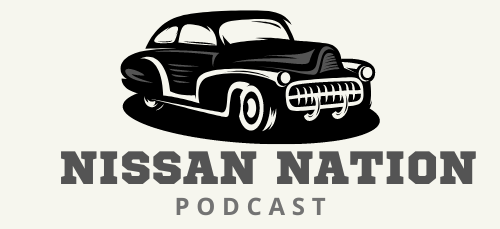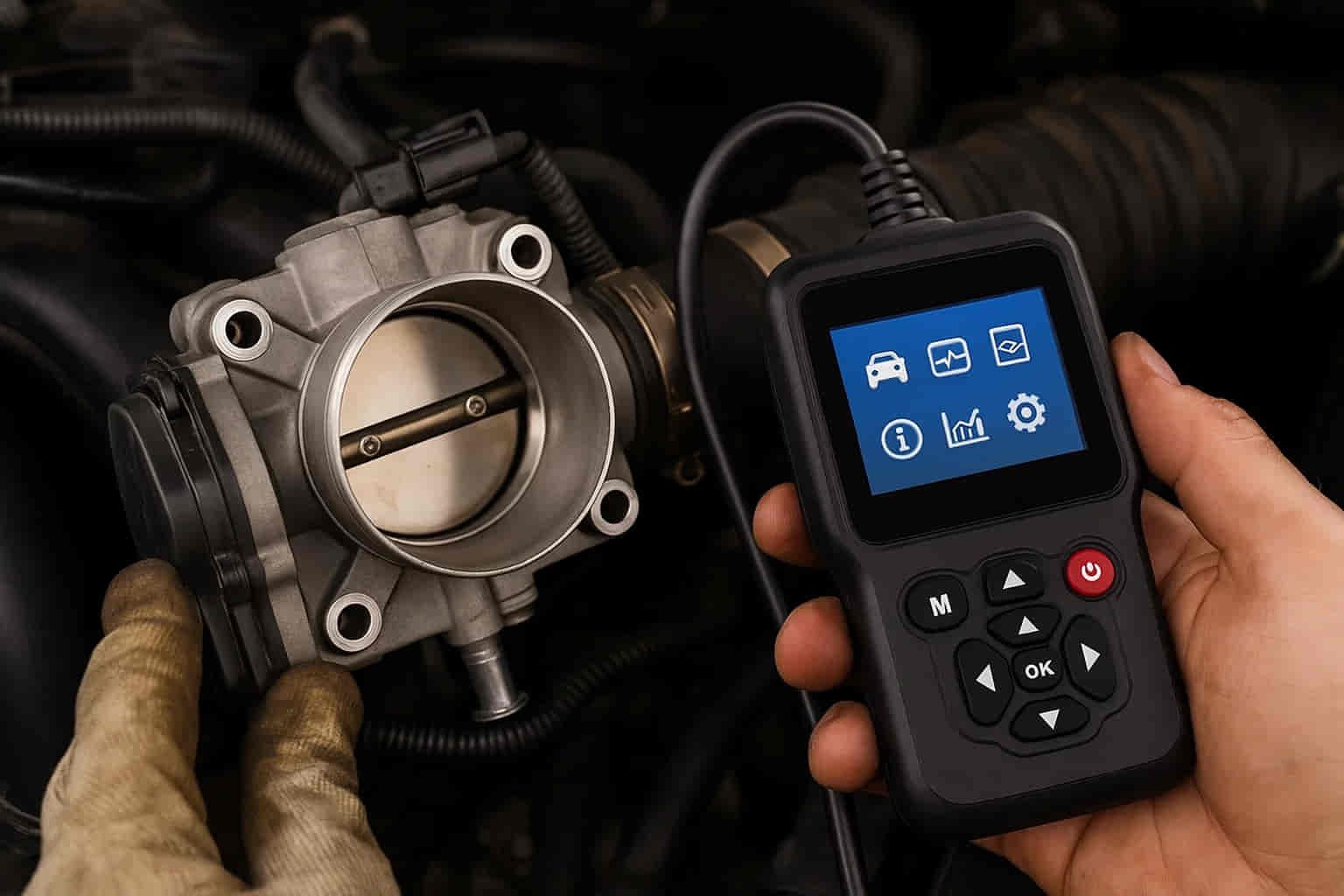If your Nissan starts shaking at idle, stalls when you come to a stop, or shows a stubborn check engine light after cleaning or replacing the throttle body, you are not alone. Many Nissan owners face these frustrating symptoms, and the fix is often simpler than expected. The key lies in a crucial but often overlooked step called the Nissan Throttle Body Relearn.
Modern Nissan vehicles rely on the electronic throttle body and the ECU to maintain a smooth idle. When the throttle body is cleaned, replaced, or disconnected from power, the ECU loses its learned idle settings. Without a proper relearn procedure, the engine struggles to find the correct airflow balance, leaving drivers with unstable idle speeds, wasted fuel, and unnecessary trips to the repair shop.
The good news is that you don’t always need expensive dealer tools to reset your throttle body. With the right instructions and a bit of patience, the relearn process can be performed at home in just a few minutes. This guide will walk you through everything you need to know about the Nissan Throttle Body Relearn, why it matters, and how to perform it successfully to restore smooth idle and reliable performance.
Why a Throttle Body Relearn Is Necessary
The throttle body in a Nissan is more than just a valve that controls airflow. It communicates directly with the ECU, constantly adjusting to keep the engine running smoothly at idle. When the throttle body is cleaned, replaced, or disconnected from the battery, the ECU loses its stored calibration. That is when problems begin.
Drivers often notice a high or fluctuating idle, rough vibrations through the steering wheel, or even stalling when the car slows down. These issues are not signs of a bad throttle body itself but rather a missing synchronization between the ECU and the new or cleaned component. In other words, the engine is breathing differently, but the ECU has not learned the new rhythm.
Skipping the Nissan Throttle Body Relearn can create ongoing headaches. Fuel consumption rises because the ECU cannot regulate airflow efficiently. The check engine light may remain on, making it difficult to know if another issue appears later. Worst of all, many owners spend hundreds of dollars at dealerships simply because they are unaware of a simple procedure that can be done at home.
The relearn process restores the correct idle parameters, allowing the ECU to adapt to the throttle body’s position in real time. Once completed, the engine regains its smooth idle, better fuel economy, and the reassurance that no hidden errors are lurking.
Methods of Nissan Throttle Body Relearn
There are two main ways to carry out a Nissan Throttle Body Relearn, and the right method depends on your tools and level of experience. The first option is the manual procedure, which requires nothing more than the ignition key and precise timing with the accelerator pedal. This method is popular among DIY enthusiasts because it can be done at home without special equipment. However, it demands patience and accuracy—missing a step by even one second can cause the procedure to fail.
The second option is using a diagnostic scanner, such as Nissan Consult or a high-quality OBD2 tool. With this method, the scanner communicates directly with the ECU, guiding the car through an Idle Air Volume Learn process. It is faster and more reliable than the manual approach, but it requires access to professional-grade equipment that not every owner has.
Both methods aim for the same result: allowing the ECU to relearn the correct throttle position so the engine can idle smoothly. If you prefer the challenge of doing things yourself and want to save money, the manual method is worth trying. If precision and speed are more important, or if you have already failed with the manual procedure, using a scanner is the smarter choice.
Manual Nissan Throttle Body Relearn Step by Step
Performing a manual Nissan Throttle Body Relearn may sound intimidating at first, but with patience and the right sequence, it can be done in just a few minutes. The key is timing. Every second matters, so it is best to keep a stopwatch or timer handy before you begin.
Start with the car fully warmed up, the gear in park, and all accessories such as lights, radio, and air conditioning turned off. Insert the key, and within three seconds switch the ignition to the ON position without starting the engine. Wait for three seconds, then quickly press and release the accelerator pedal five times within five seconds. After releasing the pedal, wait seven seconds and then press it down fully for about twenty seconds until the check engine light begins to flash. Once the light flashes, release the pedal, turn the ignition OFF, and wait ten seconds.
This sequence allows the ECU to reset its memory and begin the idle learning process. When you restart the car, let it idle for a few minutes without touching the accelerator. A successful relearn will result in a stable idle speed, usually around 650 to 750 RPM depending on the model.
If the engine still feels rough, repeat the procedure carefully. Missing a single timing window can cause the process to fail, but once completed correctly, the improvement in smoothness and throttle response is immediate.
Nissan Throttle Body Relearn with a Diagnostic Scanner
While the manual procedure works for many owners, using a diagnostic scanner is the most reliable way to perform a Nissan Throttle Body Relearn. Professional tools like Nissan Consult III, or advanced OBD2 scanners such as Autel and Launch, can guide the ECU through the Idle Air Volume Learn process with far less chance of failure.
The process begins by connecting the scanner to the OBD2 port and turning the ignition to the ON position. Once communication with the ECU is established, navigate to the engine control menu and select “Idle Air Volume Learn” or “Throttle Relearn.” The scanner will then instruct you to keep the engine at operating temperature, confirm that all electrical loads are off, and allow the car to idle. With a simple command, the ECU automatically adjusts and stores the correct throttle valve position.
One of the biggest advantages of this method is consistency. Unlike the manual approach, there is no need to count seconds or repeat the process if timing is off. The scanner ensures accuracy, which is especially useful for modern Nissan models where manual relearn may not always succeed.
Although access to such equipment often requires a visit to a workshop, many independent mechanics now offer this service at a lower cost than dealerships. For owners who value precision and time, investing in a capable scanner or choosing a professional service is often worth the expense.
Common Problems with Nissan Throttle Body Relearn and How to Fix Them
Even when following the steps carefully, a Nissan Throttle Body Relearn does not always succeed the first time. One of the most common issues is failing the manual procedure because of incorrect timing. Missing a second during the accelerator pedal sequence can reset the process, leaving the idle unchanged. The fix here is simple: repeat the steps patiently, and use a timer to stay precise.
Another frequent problem is a dirty throttle body. If carbon deposits remain after cleaning, the valve may not close properly, making it impossible for the ECU to learn the correct idle position. In this case, a more thorough cleaning is required before attempting the relearn again.
Weak battery voltage can also cause trouble. Since the ECU needs stable power during the adaptation process, a low or unstable battery may interrupt communication. Ensuring the battery is fully charged can prevent unnecessary failures.
Some drivers report that even after a successful relearn, the check engine light stays on. This usually indicates another underlying fault code rather than a relearn failure. Scanning the ECU with an OBD2 tool can reveal whether additional issues need to be addressed.
If repeated attempts continue to fail, switching to a diagnostic scanner method is the most reliable solution. Professional tools bypass the manual timing and directly instruct the ECU, minimizing the risk of error.
Nissan Models Most Affected by Idle Issues
Not every Nissan reacts the same way when the throttle body is cleaned or replaced. Certain models are more sensitive to idle changes and almost always require a proper Throttle Body Relearn. Among the most common are the Nissan Altima, Sentra, Rogue, Maxima, and Pathfinder. Owners of these vehicles frequently report unstable idle, stalling, or high RPMs immediately after throttle body service.
The Altima and Sentra, with their four-cylinder engines, often show rough idle if the relearn is skipped. The Rogue and Pathfinder, which use larger engines, can experience more dramatic stalling when slowing down or shifting into gear. The Maxima, known for its V6 performance, tends to throw a check engine light quickly if the ECU is not reset.
Although the relearn procedure is nearly identical across these models, slight differences in ECU sensitivity can make the manual method harder to succeed on certain cars. That is why many technicians recommend using a diagnostic scanner, especially on newer Rogues and Pathfinders.
By understanding how your specific model responds, you can choose the most effective method and avoid unnecessary frustration. Regardless of which Nissan you drive, completing the relearn is the key step that ensures the engine runs smoothly after throttle body service.
Cost of Nissan Throttle Body Relearn: DIY vs Professional Service
One of the first questions Nissan owners ask is whether a Throttle Body Relearn should be done at home or by a professional. The truth is that both options have clear advantages, and the choice often depends on confidence, tools, and budget.
Doing the relearn yourself is essentially free. The manual method only requires your time, a steady hand, and patience. For many, the satisfaction of fixing idle issues without spending money is reason enough to try it. However, the risk is that if the sequence fails repeatedly, frustration builds quickly and the car continues to idle poorly.
On the other hand, visiting a dealership or a local workshop adds cost. Dealers often charge between $80 and $150 for the procedure, while independent shops may offer the service for as little as $50. The benefit is reliability. With a diagnostic scanner, technicians can complete the relearn in minutes and verify the results immediately.
For owners who value savings and enjoy DIY, attempting the manual procedure first is a smart move. But if the car is still unstable after several tries, paying for a professional service prevents wasted time and ensures peace of mind. Either way, the relearn is a necessary step that should not be ignored if you want your Nissan running smoothly.
Conclusion
A rough idle, stalling at stoplights, or a check engine light that refuses to turn off can make driving a Nissan stressful. The good news is that many of these issues are not signs of major engine failure but simply the result of skipping a Nissan Throttle Body Relearn. This simple yet essential procedure restores the balance between the ECU and the throttle body, allowing the engine to breathe properly and idle as it should.
Whether you choose the manual method at home or invest in a professional scanner service, the outcome is the same: a smoother, more reliable driving experience. By taking the time to relearn the throttle body after cleaning or replacement, you can avoid unnecessary fuel waste, expensive dealer visits, and the anxiety of seeing warning lights on your dashboard.
If your Nissan has recently had throttle body service and now feels unstable, don’t ignore the symptoms. Try the relearn process today and bring your car back to its optimal performance. And if you’re still unsure, reach out to a trusted mechanic or leave your questions in the comments below—we’re here to help you keep your Nissan running at its best.

